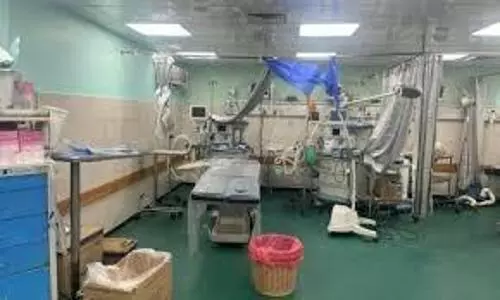
Flexible, honey-comb like material could mop up pollution
text_fieldsJeddah: Scientists have developed a flexible, 3D porous material that mimics the shape of a honeycomb and could help filtering air to remove pollutants or viruses.
Both the lattice of a honeycomb and the symmetry of a diatom are complex living structures comprising patterns and shapes that have long provided inspiration for scientists.
One recent application is to develop artificial hierarchical porous materials that are stable, yet have a large surface area and the ability to selectively extract materials.
It has been difficult however to build these structures at the nanoscale due to their complexity and pattern repeatability across scales from the individual compartments to the whole structure.
A team from King Abdullah University of Science and Technology (KAUST) in Saudi Arabia, led by Suzana Nunes, has proposed a simple method that, in just five minutes, can produce a flexible film with a complex hierarchical structure that has repeating patterns of interconnected, regularly shaped pores.
With experts in the Imaging and Characterization Core Lab, the team used the block copolymer called polystyrene-b-poly (tertbutyl acrylate) (PS-b-PtBA) to demonstrate this method.
They tested various concentrations of PS-b-PtBA with different solvent mixtures, cast the resulting solutions on glass plates and evaporated them for different time periods to promote the nucleation and growth of cavities with highly porous interconnecting walls.
The resulting film was then immersed in water to rinse off the solvent and halt the phase separation.
"By using this method we create an important platform to design artificial porous materials that replicate highly ordered porous and complex systems mimicking nature," said Stefan Chisca, research scientist at KAUST.
"These have potential use for separations, such as virus filtration, and for biological scaffolds, such as those used for bone regeneration," said Chisca.























